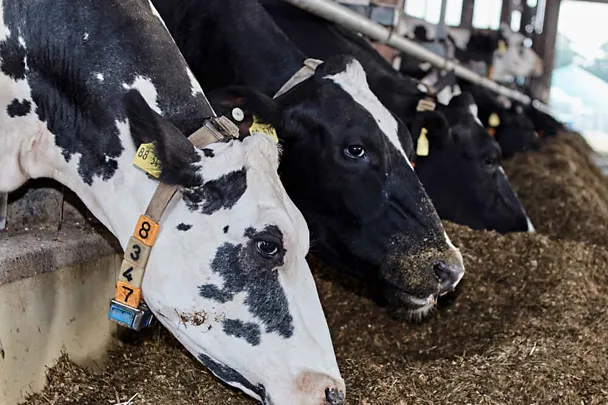RUMIVITAL®i - mehr Leistung aus Ihrem Futter

ISF Schaumann Research has tested and confirmed the effectiveness of RUMIVITAL®i in various types of rations on commercial farms. RUMIVITAL®i performs well when used in a partial TMR with NFC values in the borderline range (385 g non-fibre carbohydrates (NFC)/kg DM), which was exacerbated by the added compensatory feed. However, RUMIVITAL®i also proves its effectiveness in full TMR rations with high NFC values.
RUMIVITAL®i compared to live yeasts
A 20-week OFF-ON-OFF trial in Schleswig-Holstein showed an increase in milk yield with RUMIVITAL®i. The farm with 140 dairy cows had always successfully relied on live yeast and had a moderate daily average milk yield of just under 27 kg per cow, corresponding to a moving herd average of 9,865 kg of milk. The farm's ration is a balanced partial TMR, supplemented with concentrate feed via the transponder.
With RUMIVITAL®i, an increase in milk yield of over 1 kg per cow per day was recorded. After discontinuing the active ingredient, the increase was lost again (see Fig. 1). The result: RUMIVITAL®i caused an increase in performance from 1.3 to 1.4 kg of milk per kg of dry matter intake, caused by improved feed efficiency.
Influence on feed conversion and milk yield
The influence of RUMIVITAL®i on feed conversion and milk yield was tested on a commercial farm in Thuringia. The farm has 75 cows and milks an average daily milk yield of 38 kg with an average herd lactation day of 125 during the trial phase. During the 18-week trial period, the animals were fed a maize silage-based total mixed ration (TMR), with the herd receiving normal mineral feed in the control phase and mineral feed with RUMIVITAL®i added in the trial phase.
The already very high performance level of the farm was increased by up to 4.5% with RUMIVITAL®i (see Fig. 2). More efficient utilisation of the ration thus increases the energy yield from the ration by 0.18 MJ per kg of dry matter intake.
New flexibility in ration design
An active ingredient that increases feed efficiency and makes more nutrients from the available feed usable is extremely useful in terms of economic efficiency and sustainability. It also offers new flexibility in ration design by enabling savings in concentrated feed through improved digestion of the basic feed.
